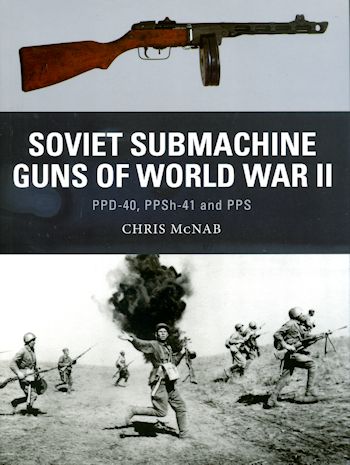 Initially
developed for use in the trench warfare of WWI, the submachine gun (SMG) was to
be a short barreled weapon that would be able to release a volley of bullets at
close range. This weapon did not see very widespread use during that conflict as
it was developed too late in the war. However, the weapon did impress several
military forces and was expanded upon in the inter-war years.
Initially
developed for use in the trench warfare of WWI, the submachine gun (SMG) was to
be a short barreled weapon that would be able to release a volley of bullets at
close range. This weapon did not see very widespread use during that conflict as
it was developed too late in the war. However, the weapon did impress several
military forces and was expanded upon in the inter-war years.
Probably the best known SMG of the 1920s and 1930s was
the Thompson, a weapon that saw a lot of use during that time by law enforcement
and the criminal crowd more than it was used by the military. However, the start
of WWII, saw widespread production of this type of weapon, particularly with the
Allies.
One nation that was a bit late in developing the SMG was
the Soviet Union. Though they had experimental models, none were widely produced
until just before the Soviets entered WWII. One of the reasons for their renewed
passion for the weapon was how Soviet units were decimated by a small number of
Finnish troops during the Winter War. There, Finnish soldiers with their Suomi
SMGs were able to wreak havoc on Soviet troops. Of course, part of this was due
to the superior tactics of the Finns, but one has to give the Suomi SMG its due
for its effectiveness.
This led the Soviets to quickly begin the design of
their own SMG. The basics for a Soviet SMG were for it to be reliable, hold a
reasonable amount of ammunition, and be able to operate in the extremes of
Russian weather. The initial winner was the PPD-40. This was a gun that
did what was expected, however, it required a lot of raw materials and
machining, meaning it took a while to build each one. A total of 90,000 or so
were built.
Fortunately, another designer was working on what would
become the PPSh-41. This gun was not the most accurate, did not have the highest
muzzle velocity, but had the benefit of being easy to maintain, reliable and was
easy to manufacture. This meant that it was cranked out by the millions and
became the iconic Soviet SMG of the war. It is the gun shown on the book cover.
So reliable was the gun, that it was used decades after the war and can still be
found today in the hands of insurgents.
The final gun covered in depth is the PPS. This gun did
all the PPSh-41 did, but was very light on machined parts. Most of it was
stamped steel and was able to be built even faster. This SMG was developed for
use by tankers, engineers and cavalry units to name a few. It was lighter and
shorter so much more easily carried by these troops. It was also quite reliable
and easy to maintain, features that were paramount for successful Soviet
equipment as most of the operators and repair types were not always very highly
trained.
In this book on the Browning, author Chris McNab covers the
development, early years and eventual combat use of the various guns. It also
covers the post-war use of the gun and those guns built and modified by other
nations. Finally, a look at the
impact of the gun is covered as well as a look at the guns that eventually
replaced it, the AK-47 assault rifle. In fact, the book using quite a bit of
space covering the assault rifle, but it is germane to the initial subject so
quite appropriate.
It is a superb book that is fascinating to read. A great
addition to this series and one that I am positive you will enjoy. Highly
recommended.
July 2014
For more on the complete line of Osprey books,
visit www.ospreypublishing.com
or contact them at Osprey Direct, PO Box 140, Wellingborough, Northants,
NN8 2FA, UK. In the US, it is
Osprey Direct at 44-02 23rd St, Suite 219, Long Island City, NY 11101., where you can
get a catalogue of available books.
If you would like your product reviewed fairly and quickly, please
contact
me or see other details in the Note to
Contributors.
 Initially
developed for use in the trench warfare of WWI, the submachine gun (SMG) was to
be a short barreled weapon that would be able to release a volley of bullets at
close range. This weapon did not see very widespread use during that conflict as
it was developed too late in the war. However, the weapon did impress several
military forces and was expanded upon in the inter-war years.
Initially
developed for use in the trench warfare of WWI, the submachine gun (SMG) was to
be a short barreled weapon that would be able to release a volley of bullets at
close range. This weapon did not see very widespread use during that conflict as
it was developed too late in the war. However, the weapon did impress several
military forces and was expanded upon in the inter-war years.